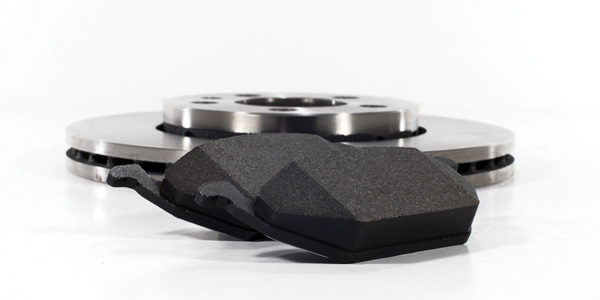
One item that is seldom covered under new car bumper-to-bumper or extended warranties is brake pads. Why? Because brake pads wear out and their service life can vary quite a bit depending on how the vehicle is driven (and who is driving it!). Think pizza delivery boy in dad’s car, or Uber driver who really need the bucks.
Stop-and-go city driving and aggressive driving can wear brake linings very quickly, even premium pads. Economy pads wear even faster. On most passenger cars and light trucks, the front pads wear two to three times faster than the rear pads or shoes. But there are exceptions. Some European import cars shift more of the braking effort to the rear wheels to decrease the stopping distance. This causes the rear pads to wear as fast or even faster than the front pads. On a few applications where consumers were really complaining about the rear pads wear out so quickly, long life replacement pads can help alleviate such concerns.
Brake pads are typically replaced when they are worn down to minimum thickness specifications, which varies depending on the application. But generally speaking, when the friction material is worn to to about 1/8 inch, there’s not much left so replacement is usually recommended.
Brake noise is another reason to replace or upgrade pads. Semi-metallic pads are typically the noisiest, but some ceramic pads can squeal or groan depending on what’s in their friction material. Many pads absorb moisture when the air is humid, causing them to groan when the vehicle is backing up or the first time the brakes are applied. There’s nothing wrong with the brakes, but some people may find the noise unsettling or annoying and want it gone. Premium replacement pads are usually quieter than many original equipment pads, and also give better braking performance, fade resistance and longevity. It all depends on the brand and the product line.
Many new vehicles are now factory-equipped with low-copper or no-copper brake linings to comply with California and several other state’s environmental regulations. It’s not a nationwide law (yet), and likely will never be under the current administration in Washington, D.C. Even so, aftermarket suppliers have seen the handwriting on the wall and have developed low-copper and no-copper friction formulations to stay one step ahead of the law. The same rules also require other metals such as zinc, nickel and antimony to be reduced as well.
Brake suppliers have used small amounts of copper (10 to 20 percent) in their brake pads because it improves heat transfer, which in turn helps the brake resist high temperature fade for safer driving. Copper also serves as a binder in the friction material and helps reduce squeaking and shuddering. It’s abrasiveness also helps keep rotors clean. So pulling copper out of the friction material required completely re-engineering a whole new generation of environmentally friendly friction materials.
Most of these next-generation low-copper and no-copper friction materials have turned out to be significantly better pads than the former materials they replace. Brake suppliers say their new pads are lasting longer, providing decreased stopping distances and delivering better all-round braking performance.
Follow your brake suppliers’ recommendations as to which products can be installed on which applications. Replacement pads and shoes should always be same or better as the original.
Related items a customer may need when changing brake pads include brake fluid, rotors (always replace if worn to minimum specifications, warped or cracked), calipers, hoses, steel brake lines and brake bleeding tools.











